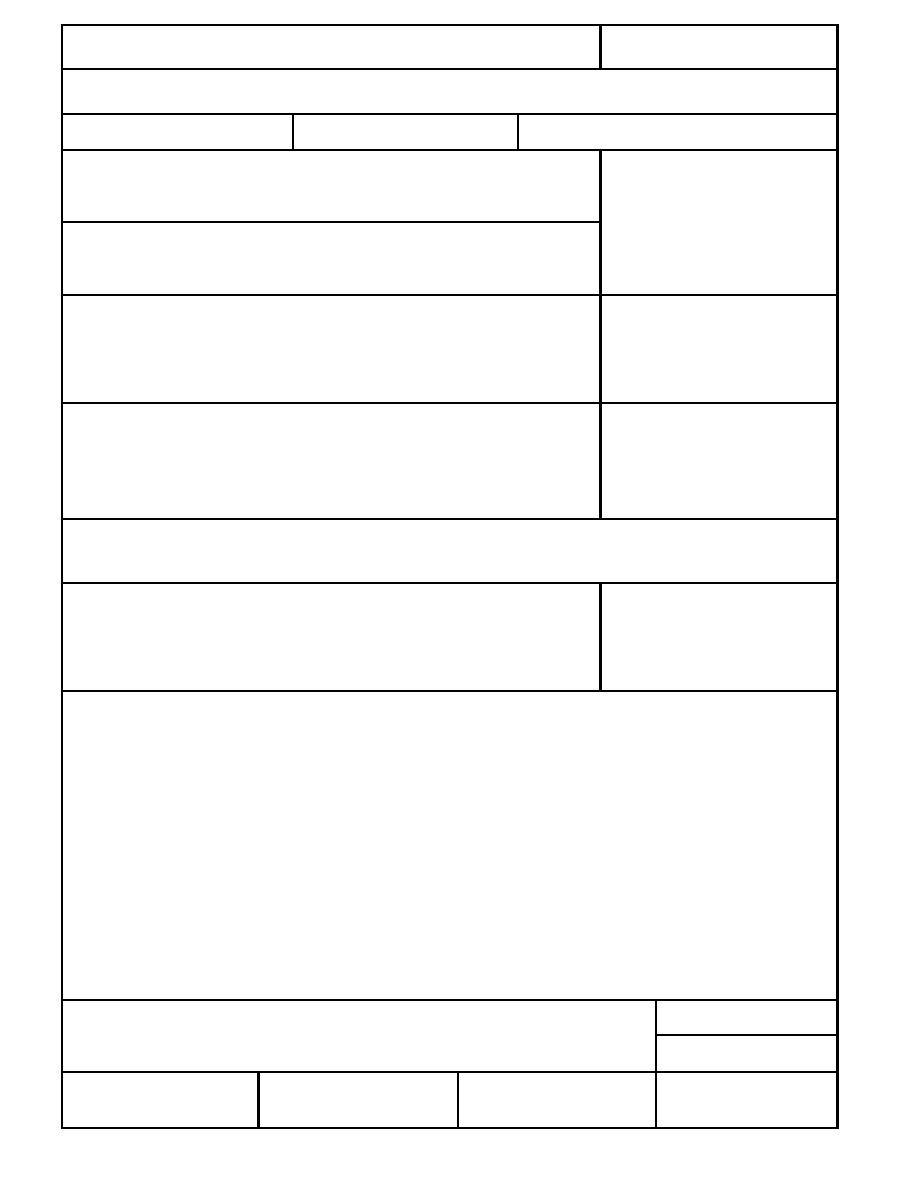
Form Approved
REPORT DOCUMENTATION PAGE
OMB No. 0704-0188
Public reporting burden for this collection of information is estimated to average 1 hour per response, including the time for reviewing instructions, searching existing data sources, gathering and
maintaining the data needed, and completing and reviewing the collection of information. Send comments regarding this burden estimate or any other aspect of this collection of information,
including suggestion for reducing this burden, to Washington Headquarters Services, Directorate for Information Operations and Reports, 1215 Jefferson Davis Highway, Suite 1204, Arlington,
VA 22202-4302, and to the Office of Management and Budget, Paperwork Reduction Project (0704-0188), Washington, DC 20503.
1. AGENCY USE ONLY (Leave blank)
2. REPORT DATE
3. REPORT TYPE AND DATES COVERED
August 1997
4. TITLE AND SUBTITLE
5. FUNDING NUMBERS
Snow Mechanics: Review of the State of Knowledge and Applications
PE: 6.27.84A
PR: 4A762784AT42
TA: CS
6. AUTHORS
Lewis H. Shapiro, Jerome B. Johnson, Matthew Sturm
WU: M09
and George L. Blaisdell
7. PERFORMING ORGANIZATION NAME(S) AND ADDRESS(ES)
8. PERFORMING ORGANIZATION
REPORT NUMBER
U.S. Army Cold Regions Research and Engineering Laboratory
72 Lyme Road
CRREL Report 97-3
Hanover, New Hampshire 03755-1290
9. SPONSORING/MONITORING AGENCY NAME(S) AND ADDRESS(ES)
10. SPONSORING/MONITORING
AGENCY REPORT NUMBER
Office of the Chief of Engineers
Washington, D.C. 20314-1000
11. SUPPLEMENTARY NOTES
For conversion of SI units to non-SI units of measurement consult ASTM Standard E380-93, Standard Practice for Use of the
International System of Units, published by the American Society for Testing and Materials, 1916 Race St., Philadelphia, Pa.
19103.
12a. DISTRIBUTION/AVAILABILITY STATEMENT
12b. DISTRIBUTION CODE
Approved for public release; distribution is unlimited.
Available from NTIS, Springfield, Virginia 22161
13. ABSTRACT (Maximum 200 words)
A review of snow mechanics indicates that, with the exception of avalanche studies, it is seldom used. In this
report we give our interpretation of why this is the case, and suggest ways to help expand the range of
problems to which snow mechanics can be applied. Until the late 1960s, most experimental work in snow
mechanics was devoted to finding values of the parameters for equations of linear elasticity, viscosity, and
viscoelasticity. In about 1970, work on that approach stopped and since then the emphasis has been on 1) the
development of nonlinear theories to describe the deformation and fracture of snow, and 2) attempts to
develop constitutive relationships based on the study of the microstructural aspects of snow deformation. We
believe that the best hope of encouraging more applications for snow mechanics in the near term lies in
improving and expanding the database on the response of snow to applied loads, and organizing it in a
manner that makes it easy for potential users to determine the anticipated deformational behavior of snow in
any particular application. To do this, we suggest developing a classification of snow based on physical
properties and index parameters that give information about the bonding and microstructure. Mechanical
properties, constitutive relations under various loading conditions, and other relevant information can then be
associated with each class.
14. SUBJECT TERMS
15. NUMBER OF PAGES
43
Classification
Electrical properties
Snow
16. PRICE CODE
Deformation
Microstructure
17. SECURITY CLASSIFICATION
18. SECURITY CLASSIFICATION
19. SECURITY CLASSIFICATION
20. LIMITATION OF ABSTRACT
OF REPORT
OF THIS PAGE
OF ABSTRACT
UNCLASSIFIED
UNCLASSIFIED
UNCLASSIFIED
UL
Standard Form 298 (Rev. 2-89)
NSN 7540-01-280-5500
Prescribed by ANSI Std. Z39-18
298-102



 Previous Page
Previous Page
